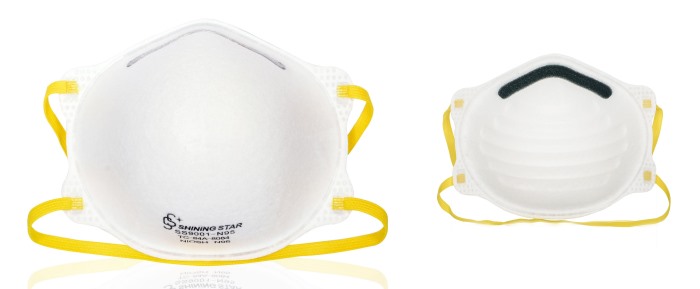If we wore masks with the FFP2 on the day we were attending medical appointments, this might have helped to protect the NHS workers, most of whom are advised to use Type II surgical masks. As high as infection risks are without protection from mouth and nose, a medical mask, or an FFP2, protects effectively. Even poorly fitted masks significantly lower the risk of infection.
The good news is, the risk drops significantly if both individuals are wearing a properly fitted medical mask, or better yet, an N95 or an FFP2 mask. If both infected and uninfected people are wearing well-fitting FFP2 masks, then after 20 minutes, the highest risk of getting infected is barely over one per 1,000, even over the lowest distance.
Tight-fitting FFP2 and KN95 masks are especially protective when both infected and non-infected people are wearing the appropriate masks. FFP2, FFP3, N95, and other respirator masks are effective in protecting wearers against viral transmission.
The teams study found that merely switching from using a cloth face mask to a certified FFP2 respirator mask dramatically improved protection and reduced transmission. The full-length studies also support an intuitive hypothesis: that to effectively protect against infections, infected people, in particular, need to wear masks that filter well and are tight on their faces. The researchers investigated how much protection the masks provided in what wearing conditions.
Johns Hopkins Medicine does not recommend face shield-like clear face shields, which are distinct from visors, but still present gaps around the face, and thus provide no such protection as wearing a mask. At Johns Hopkins, healthcare teams when treating patients use a face shield in addition to masks or N95 respirators to help with extra protection. If you need to come into close contact with someone who is not wearing a mask, face shields or another eye protection can offer some extra protection against viral transmission. Do not wear a mask-less face shield, CDC recommends, because it does not protect against the microscopic airborne droplets that may be floating beneath and within the shield.
The argument against using home-made masks and face coverings is that home-made masks would be several times less effective than a medical mask in keeping a person who is wearing them from spreading a virus, and would have little or no effect on protecting the person wearing them. Surgical masks and the like are generally considered to be ineffective. Since only few respiratory particles carry viruses, and most environments are virus-limited, wearing a mask may maintain a lower virus-inhalation rate in the low-level environment, and may account for the reported effectiveness of face masks for COVID-19 prevention. Although a detailed analysis from researchers at Max Planck Gottingen showed that ffp2 tight-fitting masks provided protection up to 75 times better than a properly fitted surgical mask, and that how a mask is worn makes an enormous difference; medical masks also greatly reduced infection risk when compared with situations with no protection of the mouth-nose area.
Figure 3 illustrates how effectiveness of surgical and N95 or FFP2 masks differs in viral-limited vs. viral-rich conditions, with masks worn by infected persons alone (source control), only by susceptible persons alone (wearer protection), or all persons (universal masking).
For more information about FFP3, FFP2 face mask, you can view at https://ffp3ffp2.com/






